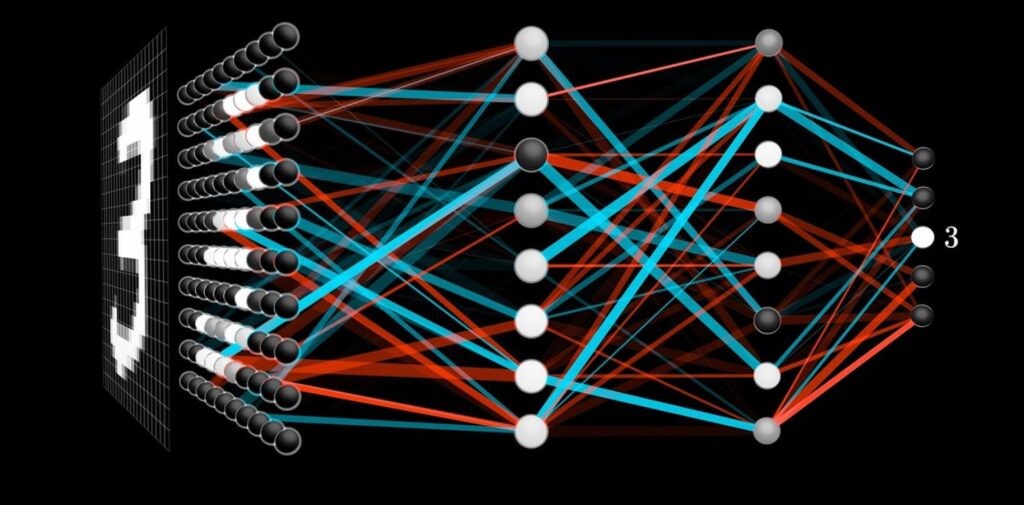In today’s digital world, artificial intelligence (AI) is changing the way we live, work, and think. One of the key technologies behind AI is something called a Neural Network. You might have heard this term many times, especially if you follow news related to technology, robotics, or smartphones. But what exactly is a neural network, and why is it so important? In this article, we will explore neural networks in simple language so that anyone, even without a technical background, can understand and appreciate their significance. Whether you’re a student, a working professional, or just someone curious about the future of technology, this guide will help you get started.

What is a Neural Network?
Let’s imagine the human brain. It has billions of tiny cells called neurons. These neurons are connected to each other and help us think, learn, and remember things. A neural network in the world of computers is inspired by this very structure. It is a system designed to mimic how the human brain processes information.
A neural network is made up of layers of nodes (also called neurons or units), just like in our brain. These nodes are connected in a network and help a computer understand complex data, make decisions, and even learn from experience. This is the foundation of what we call machine learning, which is a part of AI.
Why Should Indians Care About Neural Networks?
India is rapidly becoming a global hub for technology and innovation. With growing industries in IT, data science, fintech, and healthcare, the need for professionals who understand AI and neural networks is increasing day by day. Moreover, many Indian startups are using AI to solve real-world problems — from improving agriculture with smart predictions to diagnosing diseases faster in rural areas.
Understanding neural networks can help Indian students and professionals stay competitive in the global job market. It also opens up many opportunities in research, development, and entrepreneurship.
How Do Neural Networks Work?
To understand how neural networks work, let’s break it down into simpler steps.
Imagine you are teaching a child to recognize fruits. You show the child many pictures of apples and bananas and tell them which one is which. After seeing many examples, the child learns to identify apples and bananas on their own. Similarly, a neural network learns by looking at lots of examples.
Here’s how the process works:
- Input Layer – This is where the neural network receives the information. For example, if you are teaching the network to recognize fruits, the input could be a picture of a fruit.
- Hidden Layers – These are the middle layers that process the information. The network breaks down the picture into simple parts like shape, color, size, and patterns. These hidden layers do all the thinking and learning.
- Output Layer – This is where the network gives the result. For example, it tells you whether the fruit is an apple or a banana.
The magic happens in the hidden layers where the network adjusts itself over time to improve its accuracy. It does this by comparing the output with the correct answer and making small changes each time – this process is called training.
Where Are Neural Networks Used in Real Life?
You might be surprised to know that neural networks are already part of your everyday life. Here are a few common examples:
- Voice Assistants like Siri, Alexa, and Google Assistant use neural networks to understand and respond to your voice.
- Face Recognition in smartphones uses neural networks to unlock your phone by recognizing your face.
- Recommendation Systems on apps like YouTube, Netflix, Amazon, and even Flipkart use neural networks to suggest what you might like to watch or buy.
- Medical Diagnosis tools use neural networks to detect diseases from X-rays, MRI scans, and blood reports.
- Language Translation apps and websites use neural networks to translate from one language to another, including Hindi to English or Tamil to Bengali.

Types of Neural Networks You Should Know
As you dive deeper, you will come across different types of neural networks. Each one is designed for specific kinds of tasks. Here are a few common types:
- Feedforward Neural Network (FNN) – This is the simplest kind. Information moves in one direction, from input to output. It is used for tasks like image recognition or predicting house prices.
- Convolutional Neural Network (CNN) – This type is mainly used for analyzing images and videos. It’s great at detecting objects, faces, and even handwriting.
- Recurrent Neural Network (RNN) – This is useful when the information has a sequence, like time-series data or sentences. It’s used in language translation, chatbots, and stock market predictions.
- Generative Adversarial Network (GAN) – These are advanced networks that can create new data, like generating realistic photos or music. GANs are used in entertainment, fashion, and even game design.
How Can You Learn Neural Networks in India?
There are many resources available today to learn neural networks, especially in India. If you are a student or a beginner, you can start with free online platforms like YouTube, Coursera, or edX. Websites like NPTEL (by IITs) offer excellent video courses on AI and machine learning in English and regional languages.
Coding platforms like Kaggle and Google Colab let you experiment with real datasets and build your own models for free. Tools like Python and TensorFlow are commonly used in the industry, and there are many tutorials to help you learn them from scratch.
Moreover, many colleges and universities in India are now including AI and data science in their curriculum. Even if you are not from a technical background, some simplified programs are designed to make learning easier for everyone.

What Is the Future of Neural Networks in India?
India has a bright future in the field of AI and neural networks. Government initiatives like Digital India and National AI Strategy are supporting innovation and research in this field. Sectors like agriculture, education, healthcare, and transportation are actively using AI-based solutions to improve the lives of citizens.
Startups and big tech companies in India are hiring professionals who understand neural networks. Even traditional companies are adopting AI to improve efficiency and customer service. With the right skills, Indian students and professionals can lead the next big wave of AI development.
Final Thoughts
Neural networks may sound complex, but once you understand the basics, they become fascinating. Just like a child learns from examples, a neural network helps a computer learn to think. And in a country like India, where problems are many but opportunities are even greater, this technology can play a major role in driving progress and innovation.
If you’re curious about AI, start learning about neural networks today. It could open doors to an exciting and rewarding career, or even help you solve real problems in your community. The future is intelligent – and it’s waiting for you to be a part of it.
Let me know if you’d like this in Hindi or with some real Indian use-case examples as well!




